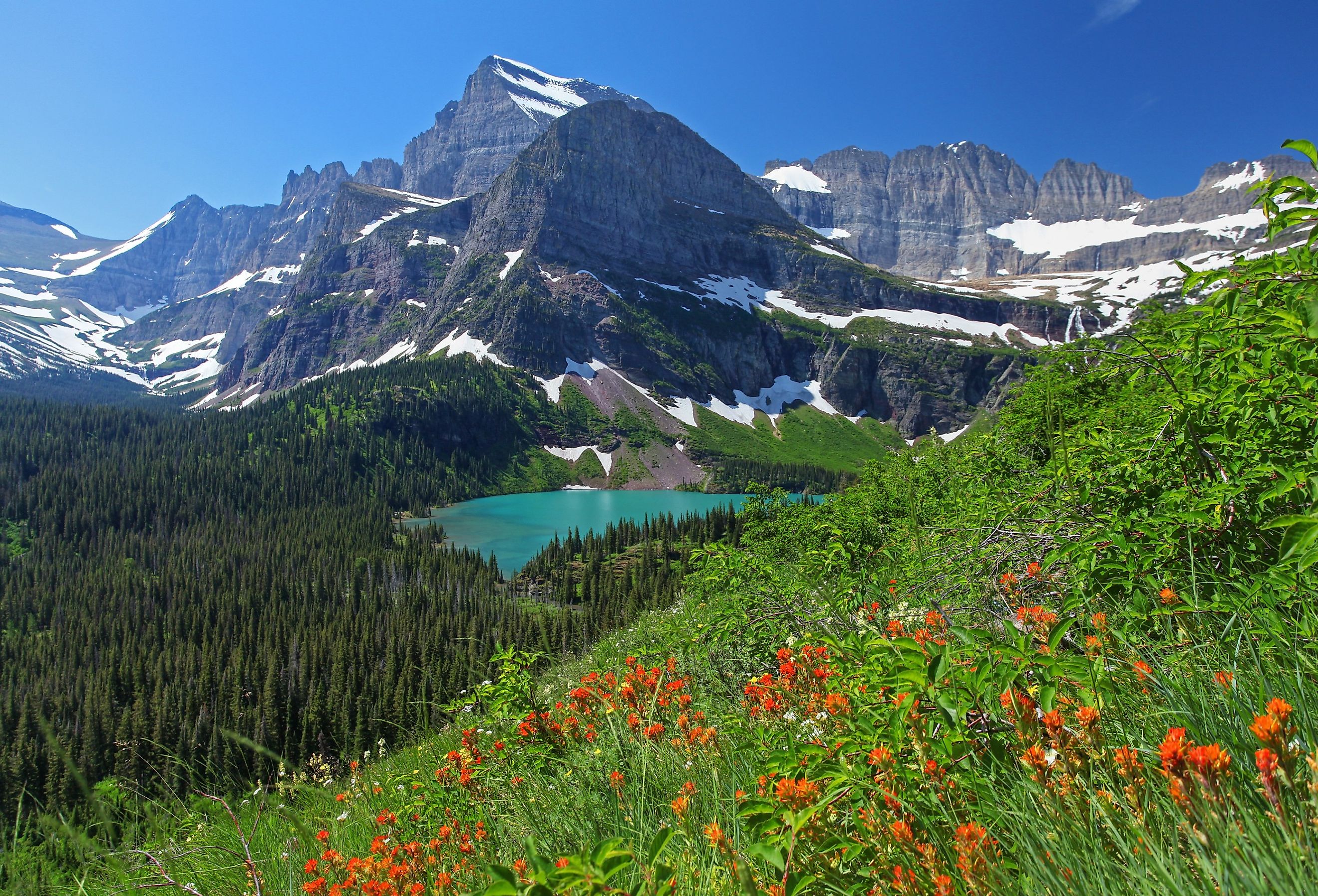
The Natural Wonders of Montana
There is no question that Montana's biggest draw is its outstanding array of wonderful and wild natural areas. Being home to some of the nation's most recognized parks, like Glacier National Park and parts of Yellowstone National Park, each containing a collection of seriously impressive features, from massive freshwater lakes to towering mountains and deep canyons, this state is the first choice for many adventure seekers from around the world.
Discover eight of the best natural wonders you must see, and learn more about what makes these sites special, with facts and travel tips to help you better plan your next trip to the Treasure State.
Glacier National Park
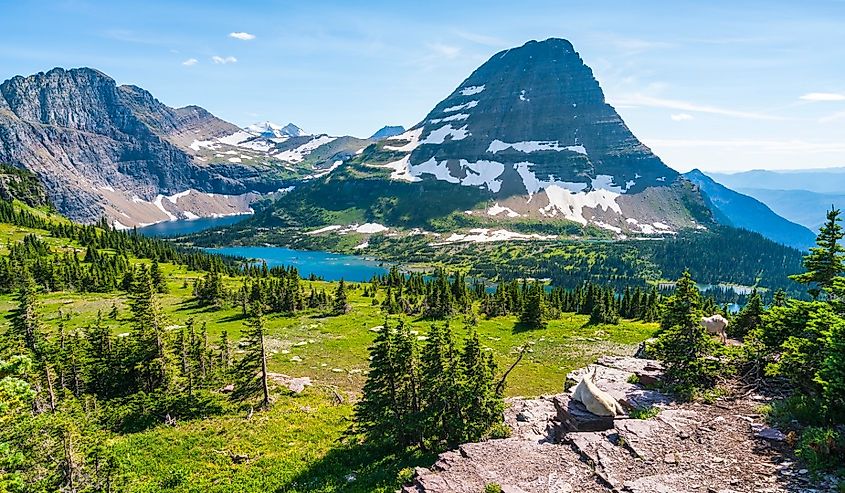
Glacier National Park, located in the Rocky Mountains of Montana, is possibly the best-known wilderness area in the state. Renowned for its stunning mountainous landscapes, Glacier spans over a million acres and is home to 26 glaciers, more than 130 named lakes, and over 700 miles of hiking trails. One of the park's most iconic features is the Going-to-the-Sun Road, a 50-mile stretch of highway that will give you some of the most breathtaking views to be found in the park, with various viewpoints over mountains, deep valleys, and cascading waterfalls along the way.
Glacier National Park supports a wide range of wildlife, including grizzly bears, mountain goats, and even the elusive wolverine. Birdwatchers can spot over 270 species of birds, from bald eagles to the tiny ruby-crowned kinglet.
This park, with its many trails, is also a hiker's paradise. Paths range from easy walks to challenging backcountry routes where you can camp overnight. Popular hikes include the Highline Trail, with its unmatched views of the Continental Divide, and the Grinnell Glacier Trail, where you can witness the retreating ice up close.
The towns of Kalispell (on the western side of the park) and St. Mary (to the east) are popular places to stay for a multiday trip in Glacier.
Flathead Lake
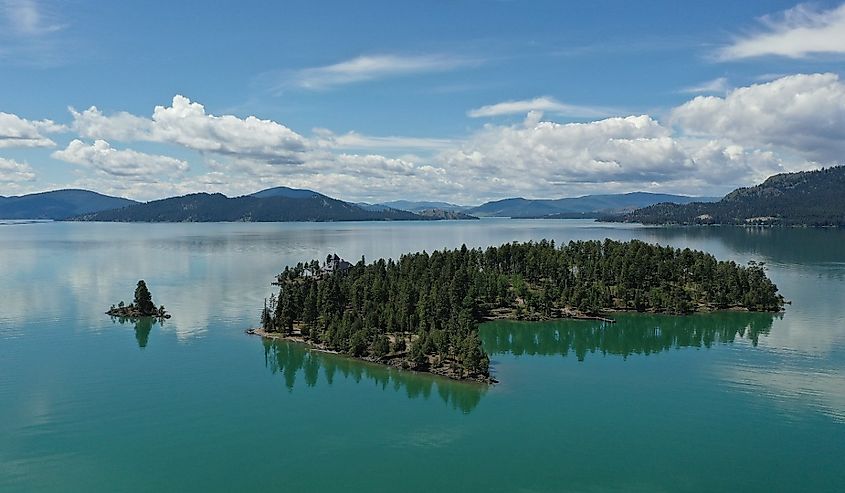
Flathead Lake is the largest natural freshwater lake in the western United States. Covering nearly 200 square miles, this expansive lake wows visitors with its clear waters and over 185 miles of shoreline. The lake is surrounded by the nearby Rocky Mountains range, making for a stunning backdrop as you gaze upon its water.
Boating, fishing, and swimming are popular on Flathead Lake, with numerous access points and marinas allowing residents and visitors alike to partake in these activities. Anglers can expect to find a diverse fish population, including lake trout, yellow perch, and largemouth bass. The lake's clean, clear waters make it ideal for swimming and kayaking, while the surrounding parks and campgrounds allow for picnicking and camping nearby. Be warned, though, the water here is generally very cold, as much of it is fed by glaciers located not too far away.
Wild Horse Island, the largest island on the lake, is a state park accessible only by boat. It is home to a notable population of bighorn sheep, mule deer, and a small band of wild horses, giving it its name. The island’s web of hiking trails will give you unbeatable views of the lake, from its shore to vantage points on top of the island's biggest hills near its center.
Bighorn Canyon
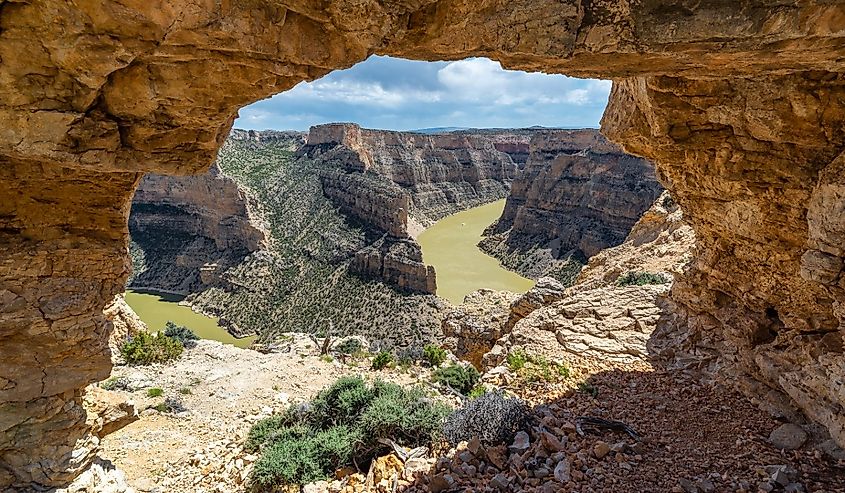
Straddling the border between Montana and Wyoming, Bighorn Canyon is a deep canyon along the Bighorn River in the lesser-visited southeastern portion of the state. The Bighorn Canyon National Recreation Area covers the canyon and the area around it, making it one of the most remote nationally protected wildlands in the country.
The canyon, carved by the Bighorn River over millions of years, boasts towering walls that rise up to 1,000 feet from the river. These impressive formations make for breathtaking views, whether you are traversing the river below, or are perched atop the rim. Trails such as the Ranger’s Delight Trail and the Sullivan’s Knob Trail are highly recommended if you want to find a more secluded spot within the canyon. Watch out for wildlife, including a number of deer species, golden eagles, and bighorn sheep.
Lake McDonald
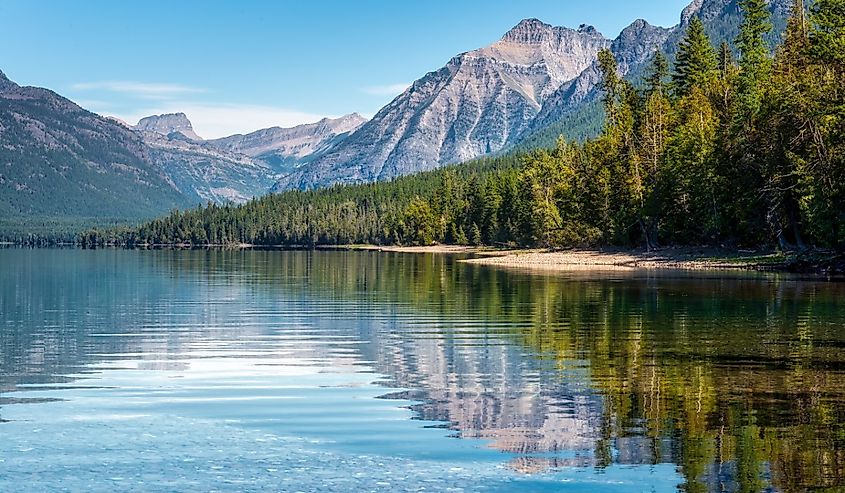
Although located within Glacier National Park, this lake has earned its own entry. Lake McDonald is the park's largest lake, stretching ten miles long and reaching depths of nearly 500 feet, and is renowned for its strikingly clear waters, which mirror the surrounding peaks of the Livingston Range. What is better about being so crystal clear is the ability to easily see Lake McDonald's colorful pebbles that are sitting just below the shoreline. Known as "glacier stones," these colorful rocks come in a beautiful array of colors, ranging from deep reds to brilliant blues.
The village of Apgar, seated at the lake's southern end, serves as a hub for visitors, offering accommodations, dining, and boat rentals. Lake McDonald Lodge, to the northeast end of the lake, is a chalet-style hotel that was built in 1913. It stands not only as a place to stay the night, but an education about the park's earliest years in operation.
Hiking trails such as the Johns Lake Loop and the Rocky Point Trail will give you the best views of the lake and surrounding forests. Here you may encounter deer, grizzly and black bears, and a variety of bird species.
Yellowstone National Park
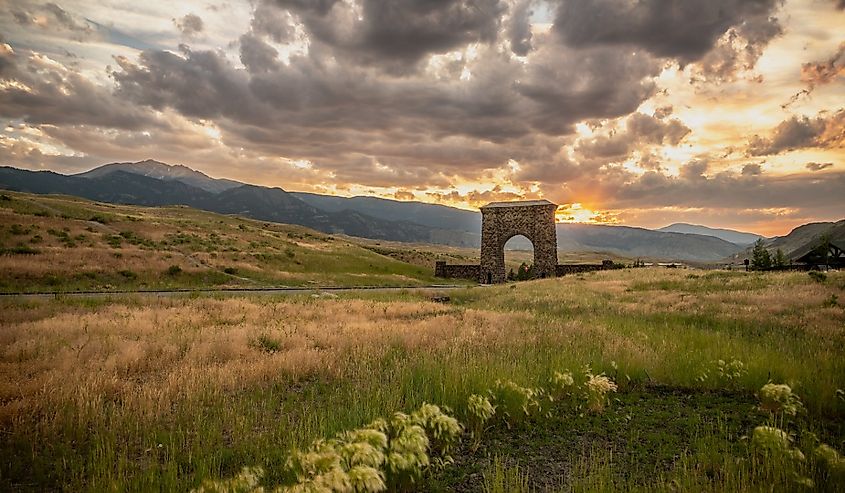
Although mainly known as Wyoming's most iconic park, the sections of Yellowstone National Park within Montana encompass some of the park's best attractions. Montana's portion includes the park's northernwestern entrance at Gardiner, often referred to as the gateway to Yellowstone. This entrance is marked by the historic Roosevelt Arch, dedicated by President Theodore Roosevelt in 1903.
The park's northern range contains beautiful trails, such as the Beaver Ponds Loop, which allows for the circumnaviation of the ponds of the same name. More difficult outings include the Sky Rim Loop Trails, which will take you over prominent geological features such as Big Horn Peak, and King Butte.
This area is rich in big mammals, including bison, elk, wolves, and even pronghorn, North America's fastest land animal, so keep an eye out and have your camera ready for a chance to see these majestic animals.
Waterton - Glacier International Peace Park
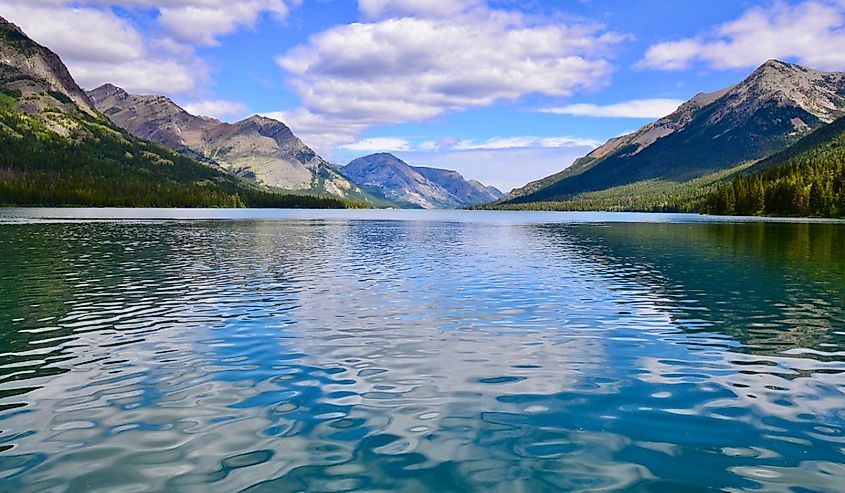
Waterton-Glacier International Peace Park, established in 1932, is on the border between Montana, United States, and Alberta, Canada, uniting Glacier National Park and Waterton Lakes National Park (on the Canadian side). This unique designation celebrates the longstanding friendship between the two nations and their shared commitment to preserving this natural environment.
Waterton Lake, which is split nearly down the middle by the national border, is only accessible on the American side via walking trails, many of which take multiple days to hike. Several backcountry campgrounds are conveniently located along the way, though, with the Waterton River Campground and the Goat Haunt Ranger Station situated on the lake's southern shores.
As the world's first International Peace Park and a designated UNESCO World Heritage site, Waterton-Glacier is well worth a visit for its symbolic importance in regard to international cooperation and conservation.
Lewis and Clark Caverns
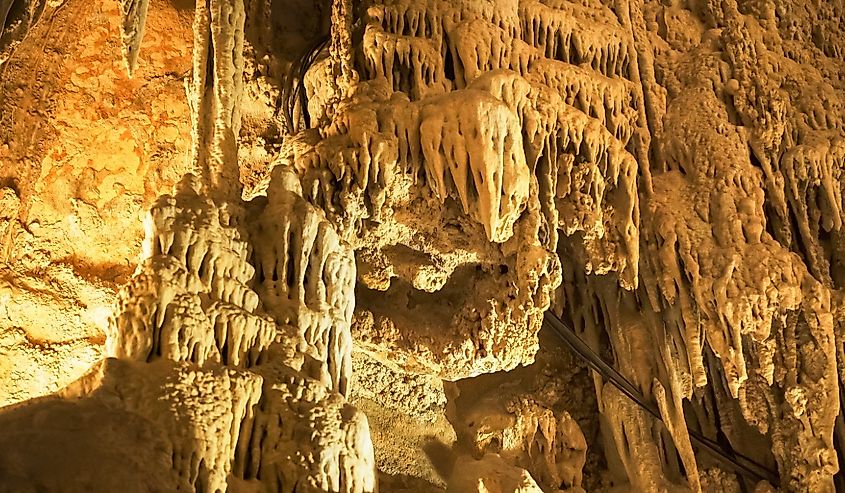
The Lewis and Clark Caverns is one of the most significant limestone cavern systems in the northwestern United States. Sitting within Lewis and Clark Caverns State Park in southwestern Montana, the caverns are named in honor of the two famous explorers, although they never actually visited the site. Guided tours into this subterranean world, showcasing gorgeous and intricate limestone formations can be booked with the park.
The caverns were discovered in the late 19th century and have since become a popular attraction, drawing visitors eager to explore this subterranean wonder. The guided tours, available from May through September, will take you on a multi-hour journey that will go in-depth into the geological events that created this landmark. The temperature inside the caverns remains a cool 50 degrees Fahrenheit, giving you a refreshing contrast to the often hot summer temperatures outside.
In addition to the caverns, the surrounding state park provides a number of other outdoor activities. Paths wind through the park's terrain and along the Jefferson River Valley. Camping facilities and a visitor center with informative displays are other useful amenities in this somewhat remote region of the state.
Makoshika State Park
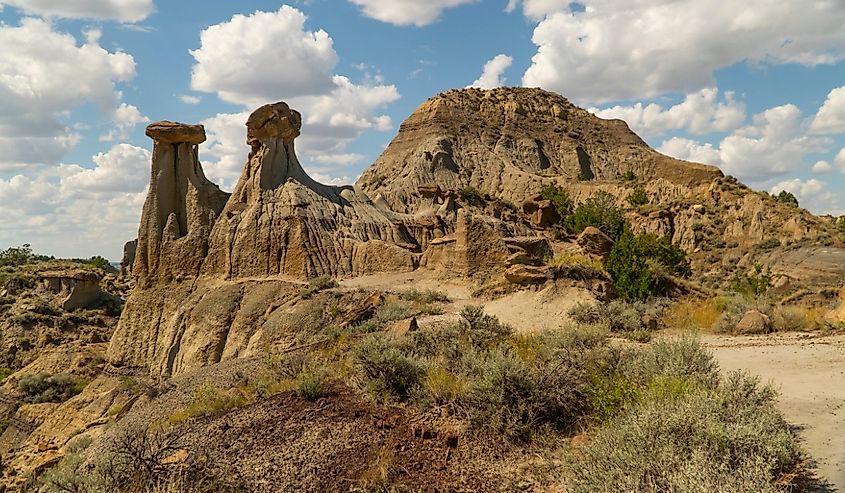
Explore the badlands of eastern Montana at Makoshika State Park. As the state’s largest state park, it encompasses over 11,500 acres. The name "Makoshika" is derived from a Lakota phrase meaning "bad land" or "bad earth," referring to the park's rugged and otherworldly terrain that was considered bad for traveling over, and for the American settlers to the area, bad for agriculture of all kinds. The park is part of the larger Badlands region and is known for its striking geological formations, including towering sandstone and shale hoodoos, steep cliffs, and expansive plateaus.
Makoshika State Park is also a treasure trove for paleontologists. The area has yielded numerous dinosaur fossils, including those of the Tyrannosaurus rex and Triceratops. The park’s visitor center features exhibits on these ancient creatures and the park's geology, making a trip here a fun experience for the whole family.
With dozens of miles of relatively flat trails throughout the park (relative to the mountainous park further west), exploration is easy. See if you can catch a glimpse of the prickly pear plants that can be found here, along with other wildlife such as pronghorns, deer, and several kinds of birds. Facilities for camping, picnicking, and disc golf are also available.
Experience Montana's Wildlands for Yourself
Montana's natural wonders, from the pristine mountains and lakes of Glacier National Park to the unique formations of Makoshika State Park, will give anyone who visits an unparalleled experience in the American West. See with your own eyes marvels like Flathead Lake, the subterranean marvels of Lewis and Clark Caverns, or the dramatic vistas of Bighorn Canyon. Regardless of where you go, you are sure to have an unforgettable road trip in the aptly named Treasure State.











